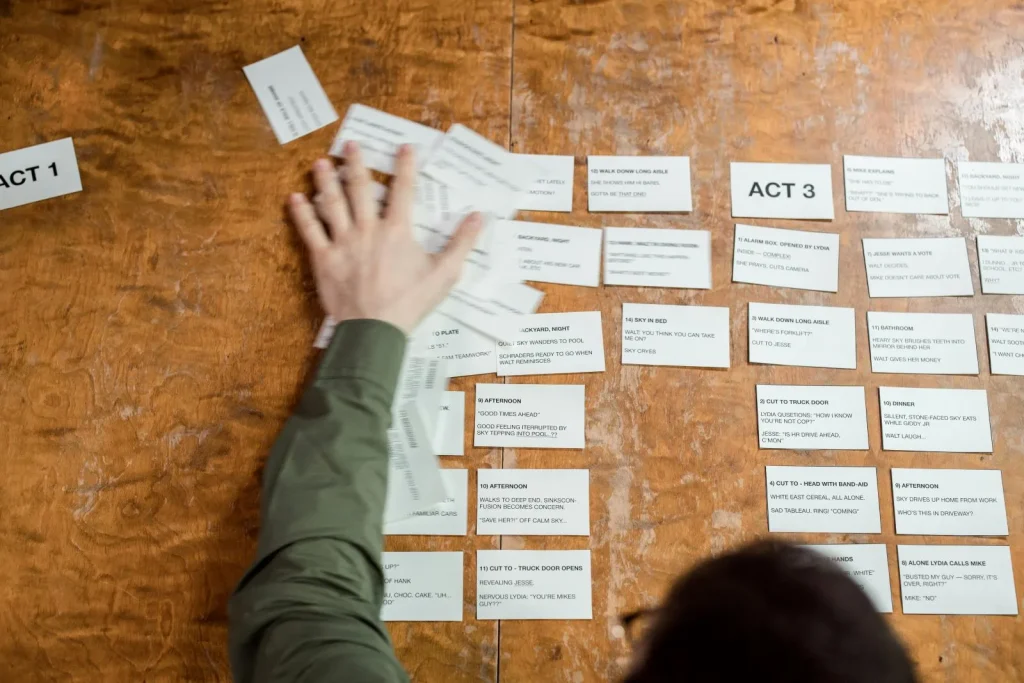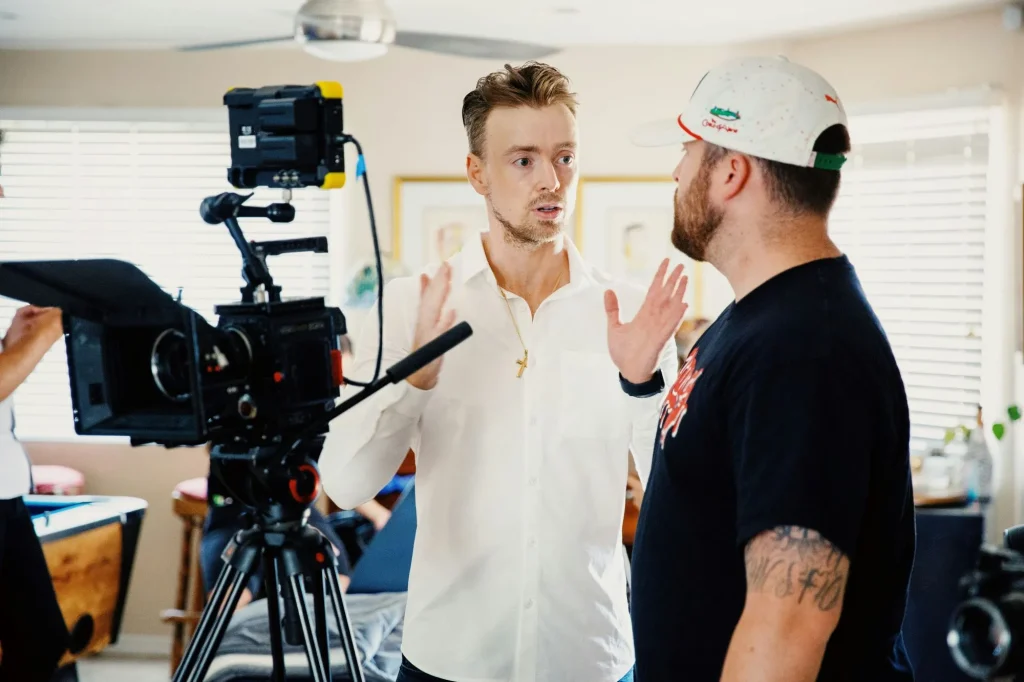Audio post-production is an essential process regardless of the type of content you are making. It is necessary for movies, videos, podcasts, TV shows, documentaries, and so much more. Knowing how everything works will help you improve the quality of audio and make it the best version of itself. If you are looking for audio post-production tips, we have a couple of secrets to share with you.
These will give you a general idea of what to expect, and it will be a nice cheat sheet you can follow during the process. Audio post-production can be quite complex, and there is a chance you won’t need all of these.
It is perfectly fine to cherry-pick and focus only on elements that will benefit your project.
Tip 1. Ensure You Have a High-Quality Recording
While this tip technically doesn’t refer to a part of post-production, it will save you so much time if you have an exceptional recording. After all, the whole point of post-production for audio is to improve the sound quality and eliminate any flaws in the recording.
The better the original audio is, the less you’ll need to work on improving it. Leaving too much work for post-production will make the process more challenging later on. One of the best ways to improve the quality is to invest in a good microphone regardless of the type of content you are making.
Needless to say, it is not always possible to make perfect audio. Mistakes will happen and some parts won’t be as good as others. But don’t worry. That is why post-production exists, and there are many ways to improve your content further.
Tip 2. Use ADR
Even with the best microphone you can find, some parts of the audio might be unusable. This issue is a common one, and it is nearly impossible to avoid. Wind, traffic, air conditioning, and all other types of ambient noises can ruin the recording.
The only option you will have is to use automated dialogue replacement. This process re-records the dialogues in the studio, and it can also be a way to improve its quality. The actors will usually watch the performance on screen, trying to match the new lines with the video.
Similar to ADR, foley recording can add various sounds that the audience will hear in the recording. Some sounds are too bothersome to record during the initial process, and it is way easier to add them later with a Foley artist.
Tip 3. Adopt a Multilingual Approach
When filming a movie or a podcast, the crew will record audio in a specific language, usually targeted toward the content’s primary audience. However, even if you create content in a broadly spoken language like English, it will still have a limited reach.
Adding localization can do wonders for your content and help you expand your audience. You can add different languages in post-production and work with teams that will help you with the localization. Just be sure to find native speakers to ensure the highest quality of audio.
Even if you are making a movie or a TV show, localization is still possible thanks to dubbing. During this process, professional actors will record dialogues in a different language, which will make it more accessible to new audiences.
Tip 4. When Translating, Make Sure It’s Contextual
If you are translating the audio, you will need to go a step further. Literal translation won’t be enough. The translated version will need to follow the same theme as the original, but you will need to adapt it to the new audience and make it relatable.
One of the best approaches is to try to adapt the audio to the local culture. Needless to say, this will require a bit of research and native speakers. While it might seem like too much, it will make your content authentic and worth checking out.
Respecting other cultures and understanding their differences will allow you to make the project truly shine. And your new audiences will love it.
Tip 5. Use the Best Tools Available
Today, you can find many programs and apps that will help you with post-production. And the main trick is finding the one that’s good for you. Each app has its own advantages and disadvantages, so you’ll need to find one that best fits your needs.
You should also check out the best plugins for audio post-production since they will be able to enhance the program you’re using and enrich it with countless new features. The better the tools you’re using, the easier it will be for you to edit the audio during the process.
Tools you are using will play a role in the quality during every step of the process. As mentioned earlier, it is one of many ways to improve the quality of the recording, but also during the post-production process. That is why investing in good post-production software and equipment is never a bad idea.
Tip 6. Hire Professional Voice-Over Artists
Depending on the type of content you’re making, you might be in need of voice-over artists. This process is common for documentaries and covering sports events since you will need someone to narrate what is happening on the screen.
Since it is such an important part of the content, you will need to find professional artists who will be able to elevate your content to new heights. Furthermore, it is one of the simplest ways to add multiple languages in post since the narration is not tightly connected to the video. It is one of many differences between dubbing and voice-overs.
Another thing you should do is keep the transcript of the audio since it will make it easier for you to add subtitles if needed. You can also include the transcript with the file if someone wants to follow along. And of course, it will make it easier for you to translate it too!
Tip 7. Use Effects but Don’t Overdo It
Sound effects are important for movies and TV series. They add to the atmosphere and enrich scenes. But at the same time, you don’t want to add too many effects. It can distract the audience from the main scene and even make dialogue inaudible.
The goal is to find a middle ground during the process of audio post-production. As for other types of content, effects are not necessary. Podcasts, for example, can benefit from a few effects here and there, but it’s best if you use them sparingly.
Effects are necessary for sounds that the foley artist is not able to make on their own. They are quite popular for movies and TV shows, especially in genres like science fiction. Since blowing stuff up can be dangerous, it is always easier to add explosions in post-production.
Tip 8. Make the Most of Compression
Compression is a way to adjust the audio during the final stages of your post-production workflow. It helps you reduce the volume of loud moments and boost it when the audio is too low. Having an option to set the dynamics of the audio during the later stages can be a game changer.
It can help you make it consistent and balanced and improve the quality regardless of what is happening in the scene. Along with other effects such as EQ or reverb, you will be able to put an accent on important moments and make them more prominent while keeping the same consistency throughout the project.
When it comes to compression, the best approach is to start slow and work your way up. Trimming the edges until the audio is perfect is the way to go. And as with other effects, you don’t want to overdo it. Some elements of the audio will need to be accented to convey a certain emotion.
Don’t Do Everything Yourself — Hire a Professional Audio Post-Production Team
The process of post-production is far from easy. It requires time, clear ideas, and expertise. But that doesn’t mean you will need to become an expert overnight. One of the simplest approaches is to hire a post-production team that will be able to do everything for you.
Here at Force Media, our team has decades of experience working on all types of projects. We know how post-production works, we have an incredible studio and the best tools available to make your project shine.
You don’t need to go through this alone when we can elevate your project to new heights. Contact us today and tell us more about your upcoming project — we’ll handle the rest!


